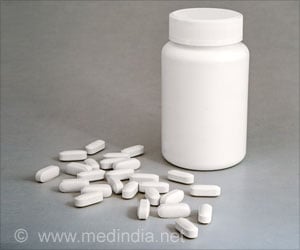New approach allows for less frequent dosing and course of treatment apart from providing some protection from infection, opening up the possibility of using the combination in prophylaxis.

‘Acyclovir combined with activated carbon acts on both HSV-1 and HSV-2 viruses. The combination was more effective and faster in reducing inflammation and viral load than acyclovir alone.’
Read More..




There are two types of herpes simplex virus: herpes simplex 1, which infects the eyes and mouth and is a leading cause of blindness, and herpes simplex 2, a genital infection that causes warts and can seriously impair quality of life.Read More..
Treatment for both infections often includes acyclovir -- a systemic medication taken orally. However, long-term use often results in resistance to the drug as well as kidney damage. Activated carbon is known to have purifying effects by trapping toxins in its highly porous structure. Particles tend to bind to charcoal easily and it is often used in filters for water for this reason.
Shukla and his colleagues looked at the effect of both plain activated carbon and activated carbon plus acyclovir on HSV-1 and HSV-2.
Dilutions of plain activated carbon were able to reduce the infection of cells in the lab when applied to the cells prior to exposure to HSV-1 or HSV-2. They saw a 4% to 60% reduction in infections compared with when they exposed the cells to the virus without activated carbon present.
When they combined acyclovir with activated carbon and tested the mixture in mice infected with either HSV-1 or HSV-2, applying it to either the eyes or genitals, they saw that it was more effective and faster at reducing inflammation and viral load than topical or systemic acyclovir alone. Additionally, they found that the drug seemed to be working much more efficiently when combined with activated carbon, and they could achieve the same reductions in viral load and inflammation using far fewer doses than with acyclovir alone.
Advertisement
Yadavalli and Shukla call the charcoal delivery system DECON for Drug Encapsulated Carbon.
Advertisement
Source-Eurekalert












